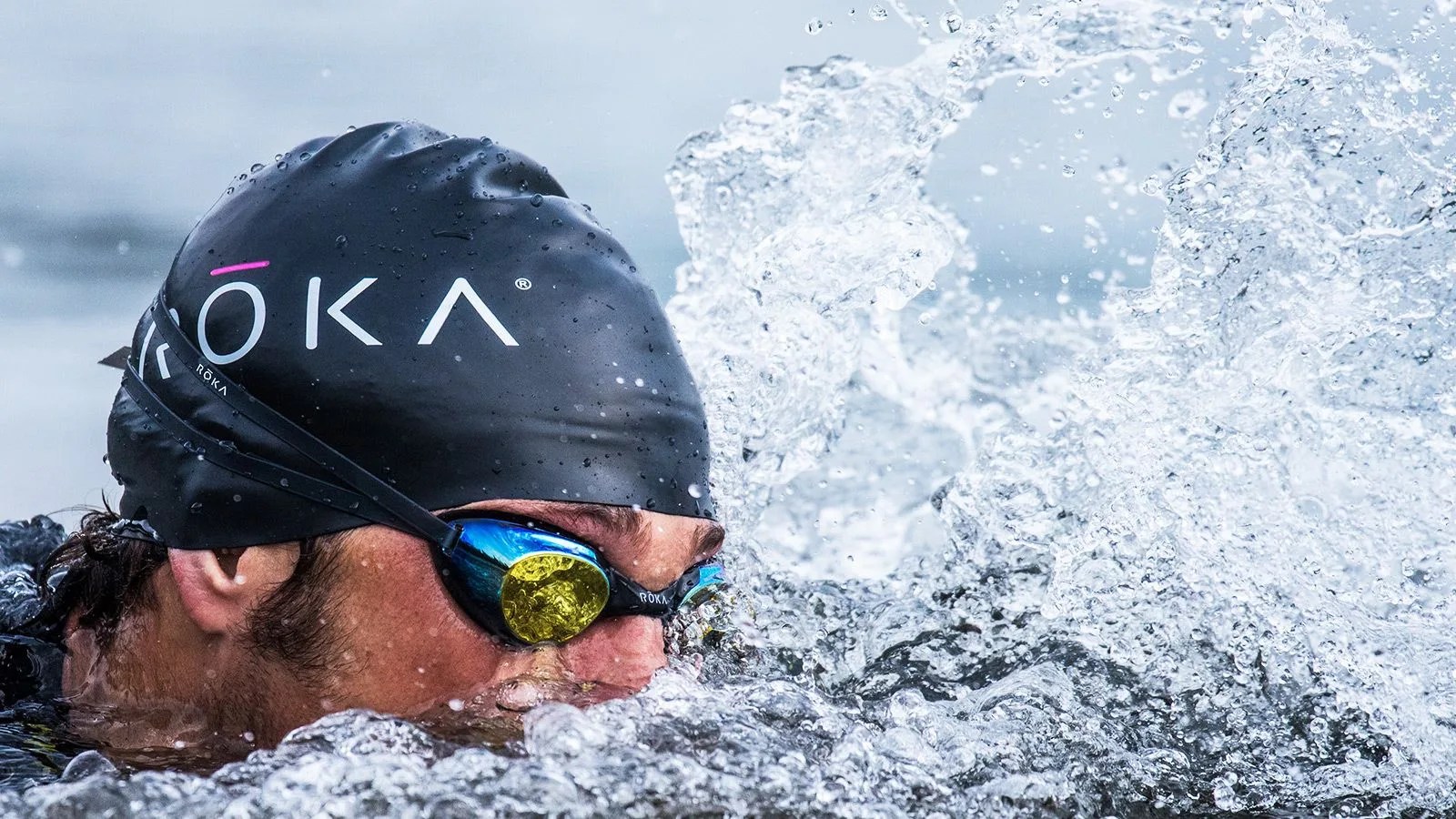Buying swim goggles is a lot like buying running shoes: There are a variety of shapes for different bodies and different recreational applications — lap swimming differs from snorkeling, as sprinting does from walking. Ultimately, though, the best way to choose a pair of goggles is to put them on and get in the water to see how they feel, whether they leak, if they offer good peripheral vision, etc. And so it’s a little bit surprising how long it’s taken for a goggle company to to offer a variety of options in a flagship product. Dallas-based Roka, which was founded as a wetsuit company in 2013 by two former All-American swimmers from Stanford, did just that in March 2015 when it launched Spctrm, a line of 27 total goggle options across four shapes and (in most cases) eight tints.
Roka’s target market is the gear-savvy multisport athlete who likely has between three and five interchangeable lenses for his sunglasses to best suit a variety of cycling and running terrains and weather conditions. Hence the eight tints, which include light amber, dark amber mirror, light vermillion, dark vermillion mirror, light gray, dark gray mirror, clear mirror and cobalt. These colors are intended for specific environmental conditions, from indoors (clear mirror) to early morning transition light in a race with orange and red buoys (dark amber mirror) to a sunny day with an urban backdrop (dark gray mirror), and everything in between.
Choosing one of the four different shapes is a matter of preference. S1 is a 35 x 26mm small lens; F1 is a 38 x 28mm medium lens; F2 is a 44 x 33mm medium lens; X1 is a 53 x 44mm large lens. As you move from the S1, a classic, Swedish-shaped goggle, to the X1, you increase the comfort and the field of view at the expense of increased drag, which isn’t really a factor unless you’re counting seconds. Comfort is a factor, though, especially if you’re swimming regularly for an hour or more. While plenty of competitive swimmers put up with the minimalist, gasket-free Swedes, having a bit of silicone between the plastic and your face is a nice amenity. The sweet spot for most triathletes is probably F1 and F2, which are both comfortable, relatively low profile and offer a wide field of view for open-water sighting (especially F2).
Until now, goggle makers haven’t kept pace with the likes of Oakley, which offers a staggering number of tint options for everyone from snowboarders to golfers. Swimming is already the least expensive sport of the three disciplines in triathlon, and since everything in the Spctrm line is under $30, it’s reasonable to have a few pairs in the gear bag for swimming in different conditions. For a lot of triathletes who train the whole year for a few big races — or maybe just one Ironman — that’s a small price to pay for knowing you’ll have the appropriate eyewear for any race backdrop or weather condition. rokasports.com
